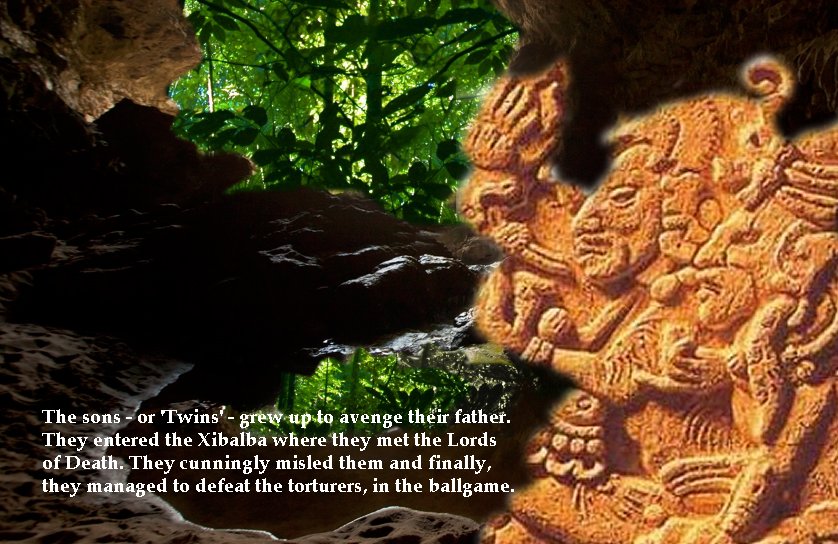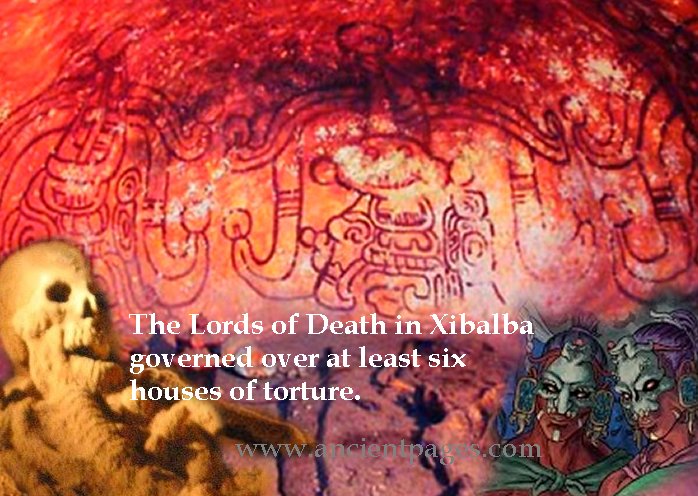Xibalba: Nine-Leveled Underground Place Of Fear Ruled By Lords Of Death In Maya Beliefs
A. Sutherland - AncientPages.com - The ancient Maya believed that the underworld – Xibalba - was a ‘place of fear’. In some ancient accounts, it is a domain of evil demons, busy with plotting against the gods in heaven. In other accounts, Xibalba is a place of decay and disease and a destination of human souls after death.
After the creation of the earth, the Popol Vuh says, one of the routes from the surface of the earth to the Xibalba council house was through a cave passageway located at the eastern horizon. It was reached by traveling through a dangerous, rocky road filled with many obstacles difficult to overcome, such as a river filled with blood or another one, full of scorpions.
This large underground city is organized into nine, gradually descending levels. It contains passages, dark caves, and the living spaces occupied by the Lords of Xibalba.
Popol Vuh of the K'iche' people says the Xibalba has twelve gods - the Lords of Xibalba. The first among the Maya Death Gods ruling Xibalba were Hun-Came ("One Death") and Vucub-Came ("Seven Death").
The remaining ten Lords are referred to as demons responsible for various forms of human suffering; they cause pain, sickness, fear, starvation, fear, and finally death.
The remaining occupants of Xibalba remain under the control of these Lords of Death occupied with trials, tests, and awful traps for anyone who enter the city of Xibalba.
The Lords of Death govern over at least six houses of torture, filled with terrible trials for visitors. The first was Dark House, a house that was completely dark inside. The second was Rattling House or Cold House, full of bone-chilling cold and rattling hail. The third was Jaguar House, filled with hungry jaguars.
The fourth was Bat House, filled with dangerous bats, and the fifth was Razor House, filled with blades and razors that moved about of their own accord. The sixth place was Hot House, filled with fires and heat. No average person could enter without dying.
According to the Popol Vuh, Xibalba has also a famous ballcourt, in which the heroes succumbed to the trickery of the demons in the form of a deadly, bladed ball.
One of the Maya well-known myths tells about the Hero Twins (Xbalanque and Hunahpu) who were ballplayers like their father and uncle, Hun Hunahpu and Vucub Hunahpu. Sent to Xibalba by the Lords of the Underworld, the father and uncle were defeated and sacrificed. Two sons were conceived, however, by the seed of the dead father. The pregnant mother fled from Xibalba.
The sons - or 'Twins' - grew up to avenge their father. They entered the Xibalba where they met the Lords of Death. They cunningly misled them and finally, they managed to defeat the torturers in the ballgame. Later, they could safely escape and contributed to their downfall.
For the ancient Maya, it was an important symbol, a resurrection of life not only associated with human life but also that of creatures and the agricultural cycle of growth, decay, and reemergence.
On the Maya depictions, the hero Hun Hunahpu is the maize god, Hun H’unahpu, probably the most important of the celestial beings in the Maya beliefs.
Some places were believed to be entrances to the Xibalba, one of them was a cave in the vicinity of Cobán, Guatemala, and another, a cave network in Belize, located on the eastern coast of Central America.
Written by – A. Sutherland AncientPages.com Staff Writer
Copyright © AncientPages.com All rights reserved. This material may not be published, broadcast, rewritten or redistributed in whole or part without the express written permission of AncientPages.com
Expand for referencesMore From Ancient Pages
-
 Why Was The Urnes Brooch So Popular At The End Of The Viking Age?
Archaeology | May 27, 2023
Why Was The Urnes Brooch So Popular At The End Of The Viking Age?
Archaeology | May 27, 2023 -
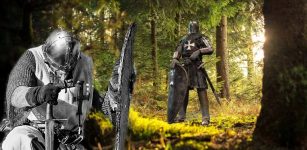 Fascinating Medieval Knight Armor History
Featured Stories | Oct 23, 2018
Fascinating Medieval Knight Armor History
Featured Stories | Oct 23, 2018 -
 Ancient Books, Scrolls And Manuscripts Burned By Church And Evil Emperors
Artifacts | Aug 27, 2018
Ancient Books, Scrolls And Manuscripts Burned By Church And Evil Emperors
Artifacts | Aug 27, 2018 -
 Vikings’ Encounters With Peculiar White-Dressed Humanoids And Cave Dwellers In Unknown Lands Described In Norse Sagas
Featured Stories | Sep 5, 2024
Vikings’ Encounters With Peculiar White-Dressed Humanoids And Cave Dwellers In Unknown Lands Described In Norse Sagas
Featured Stories | Sep 5, 2024 -
 Japan’s Ancient Practice Of Cranial Modification: The Case Of The Hirota People In Tanegashima
Archaeology | Aug 18, 2023
Japan’s Ancient Practice Of Cranial Modification: The Case Of The Hirota People In Tanegashima
Archaeology | Aug 18, 2023 -
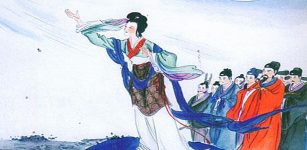 Mazu: Chinese Goddess Of The Sea – Protector Of Fishermen
Chinese Mythology | Apr 16, 2016
Mazu: Chinese Goddess Of The Sea – Protector Of Fishermen
Chinese Mythology | Apr 16, 2016 -
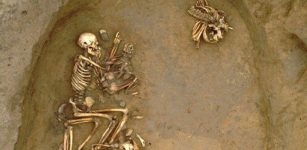 Ancient DNA Has Traced Large-Scale Migrations Into Bronze Age Britain And The Emergence of The Celtic Language
Archaeology | Dec 30, 2021
Ancient DNA Has Traced Large-Scale Migrations Into Bronze Age Britain And The Emergence of The Celtic Language
Archaeology | Dec 30, 2021 -
 Unexplained Visions Of Airmen – Controversial Investigation – Part 2
Featured Stories | Feb 9, 2020
Unexplained Visions Of Airmen – Controversial Investigation – Part 2
Featured Stories | Feb 9, 2020 -
 Unique Bronze Age Treasure Discovered In Swedish Forest Was A Gift To Norse Gods
Archaeology | Apr 30, 2021
Unique Bronze Age Treasure Discovered In Swedish Forest Was A Gift To Norse Gods
Archaeology | Apr 30, 2021 -
 Why Didn’t Pythagoras And His Followers Eat Beans?
Ancient History Facts | Jan 18, 2019
Why Didn’t Pythagoras And His Followers Eat Beans?
Ancient History Facts | Jan 18, 2019 -
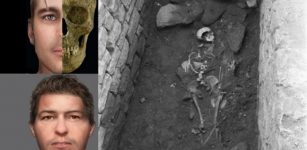 Mystery Of An Edinburgh Crypt – Secrets Of Warriors Of Dark Ages In Scotland – Revealed
Archaeology | Oct 3, 2015
Mystery Of An Edinburgh Crypt – Secrets Of Warriors Of Dark Ages In Scotland – Revealed
Archaeology | Oct 3, 2015 -
 Mystery Of The Coal On The Pirate Shipwreck Queen Anne’s Revenge Solved
Archaeology | Apr 13, 2023
Mystery Of The Coal On The Pirate Shipwreck Queen Anne’s Revenge Solved
Archaeology | Apr 13, 2023 -
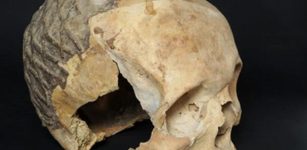 What Was Asphalt Doing On A 9,000-Year-Old Skull Discovered In The Judean Desert
Archaeology | Feb 1, 2022
What Was Asphalt Doing On A 9,000-Year-Old Skull Discovered In The Judean Desert
Archaeology | Feb 1, 2022 -
 Drought Was Not The Reason Cahokia, North America’s First City Was Suddenly Abandoned – New Study
Archaeology | Jul 4, 2024
Drought Was Not The Reason Cahokia, North America’s First City Was Suddenly Abandoned – New Study
Archaeology | Jul 4, 2024 -
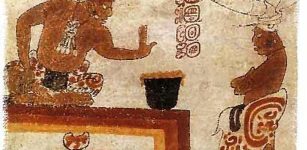 Chocolate Was Invented In Mesoamerica 1900 B.C.
Ancient History Facts | Jan 17, 2016
Chocolate Was Invented In Mesoamerica 1900 B.C.
Ancient History Facts | Jan 17, 2016 -
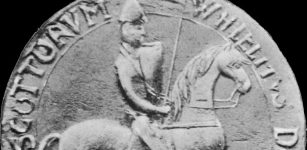 On This Day In History: William I ‘The Lion’ Was Crowned At Scone – On Dec 24, 1165
News | Dec 24, 2016
On This Day In History: William I ‘The Lion’ Was Crowned At Scone – On Dec 24, 1165
News | Dec 24, 2016 -
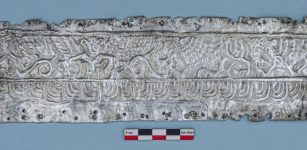 Unique Plate Of Winged Scythian Gods And Walking Griffons Discovered In Middle Don
Archaeology | Nov 19, 2021
Unique Plate Of Winged Scythian Gods And Walking Griffons Discovered In Middle Don
Archaeology | Nov 19, 2021 -
 Mysterious Hammer Of Thor In Canada Was Built Before The Arrival Of The Inuit – Did Vikings Raise The Monument?
Featured Stories | Jan 22, 2018
Mysterious Hammer Of Thor In Canada Was Built Before The Arrival Of The Inuit – Did Vikings Raise The Monument?
Featured Stories | Jan 22, 2018 -
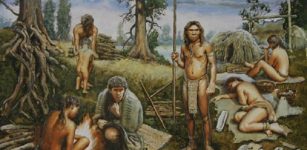 Humans Started Wearing Clothes 100,000 To 500,000 Years Ago
Ancient History Facts | Mar 17, 2018
Humans Started Wearing Clothes 100,000 To 500,000 Years Ago
Ancient History Facts | Mar 17, 2018 -
 Why Did Socrates Drink Poison And Commit Suicide?
Ancient History Facts | Apr 21, 2018
Why Did Socrates Drink Poison And Commit Suicide?
Ancient History Facts | Apr 21, 2018

